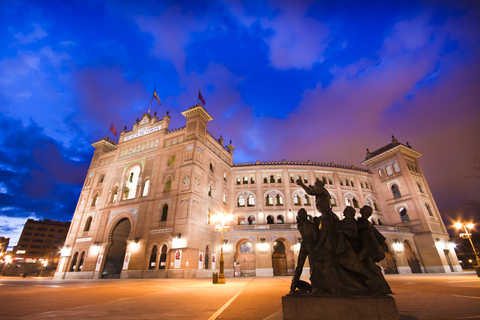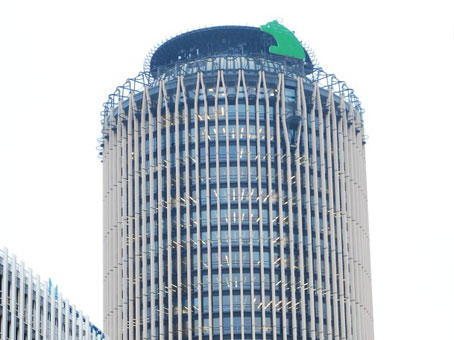
[Last updated April 2023] A guide to serviced offices and office space for rent in Madrid as well as general information that may be useful if you are considering renting office space in the city.
For further Madrid offices information or to search office space for rent in Madrid just click. Or contact us for any other query.
History & Geography
The capital of Spain and the country’s largest city is one of the best-known metropolises in the world. Madrid is located almost in the direct centre of the country on the Manzanares River and near the massive Lozoya River. The city spans approximately 230 square miles and is the second-largest in the EU after Paris. Madrid grew from a Roman settlement in the 2nd century BC and was originally named ‘Matrice’ in reference to the Manzanares River. After the demise of the Roman Empire, the settlement was occupied by the tribes of the Sueves, Vandals and Alans in turn. In the 7th century, Spain was conquered by Arabs from North Africa and was renamed ‘Mayrit’, an Arabic term for ‘trees’. The modern name Madrid is derived from this. In the 9th century, Emir Muhammad I of Cordoba built a giant fortress in Madrid and the settlement grew into a thriving town. In 1085, Madrid was conquered by Christian forces and became part of the Kingdom of Castile. Madrid continued to grow rapidly and, in 1188, formally became a city. By the late 16th century, the city had over 30,000 inhabitants and Phillip II of Spain decided to base his court permanently in Madrid. During the War of Spanish Succession, Madrid supported Philip of Anjou who was crowned Philip V of Spain in 1700. Madrid was the site of widespread bloodshed during the Napoleonic Wars when the residents of the city revolted against the French troops stationed there. The massacre which followed is represented in the artist Goya’s paintings. During the Spanish Civil War in the 1930s, Madrid was occupied by Republican forces and was heavily bombed. In the latter half of the 20th century, Madrid grew rapidly and its economy boomed, especially in the 1960s and 70s. Today, the city is one of the premier capitals of Europe and a hub of industry, technology and culture.
Economy
Traditionally, Madrid’s economy was based around the administration located in the city, as well as the craftsmen and manufacturing. However, today, the economy of the city has changed and there are a number of different industries driving Madrid’s prosperity. Like many of its fellow European capitals, Madrid has experienced very strong growth in the service industry. These industries include transport and communication, financial services, and real estate. It is estimated that the services sector makes up a little more than half of the city’s economy. Madrid’s GDP in 2018 was 229,228 million EUROs, behind only Paris in Europe and ahead of other behemoths like Moscow and Barcelona. Madrid’s high standard of living and efficient and well-organised infrastructure means that it is rising steadily in the ranks of the world cities. The recently constructed ring roads, new housing and the Barajas Airport are all central to the success of Madrid’s economy and its ranking as one of the most important financial and commercial centres in Europe and the world.
Tourism & Culture
Madrid does not have quite the tourism industry that its counterpart Barcelona has, but nevertheless is a popular destination for tourists in Europe and the world, seeing over several million tourists every year. The city is renowned for its art scene and has some of the best art museums in the country. Primary among these is what is known as the Golden Triangle of Art, consisting of three museums on the Paseo del Prado – Prado Museum, Thyssen Bornemisza Museum, and the Reina Sofia Museum. Madrid is also known for its excellent nightlife. The city has a wealth of tapas bars, cocktail lounges, jazz bars, restaurants and clubs. Among the most popular neighbourhoods for going out in the city are Bilbao, Tribunal, Atocha, Alonso Martinez, and Malasana. Malasana is known for its bohemian culture and cafes and galleries. Many tourists come to Madrid determined to take in a bullfight, which take place in the Plaza del Toros in Las Ventas. The stadium has a seating capacity of 25,000. The bullfighting season begins in March and ends in October. Of course, the city is also known for its football, with the premier team being Real Madrid, which plays in the legendary stadium Santiago Bernabeu.
Transportation
As one would expect of a city of its stature, Madrid has a highly advanced transportation system. The city is served by the Barajas Airport which saw over 50 million passengers in 2022 (down from 62 million in 2029). The airport is located approximately five miles from Madrid’s city centre and is reachable by the metro. The metro itself is one of the largest such systems in the world and has 176 miles of lines. It is the largest in Europe. Madrid is also well served by a network of buses as well as taxis. Spain’s high-speed rail network RENFE also serves Madrid.

Office space for rent in Madrid
When we first published this report, in 2013, Madrid’s office space vacancy rate was at 12 per cent, a marked increase from one year previously.
This change was caused primarily by companies downsizing following the Great Recession. There was not a great deal of speculative supply due to come onto the market at the time and there was not likely to be any in the years ahead.
The prime office rent was, at that time, currently 290.88 EUROs per square metre per year.
The Spanish financial system had undergone a series of reforms and new regulations had been put in place. It was expected to restore confidence in the Spanish market and boost the rental and property markets overall.
In 2022, there were 500,000 square metres of office lettings in Madrid representing a 40% increase over 2021 indicating signs of positive recovery following the pandemic.
Vacancy rates at the end of 2022 stood at 11.5% which was lower than 2021’s 12%.
In 2022, prime office rents stood at 402 EUROs per square metre per year.
It was expected that prime rents would continue to follow the approximately 3% YOY growth rate, from 2021, and increase throughout 2023 and beyond.
Our office space search, advisory and acquisition services are FREE, always. We are globally regulated by the Royal Institution of Chartered Surveyors (RICS) ensuring the highest standards of commercial property search advice and service at all times.
